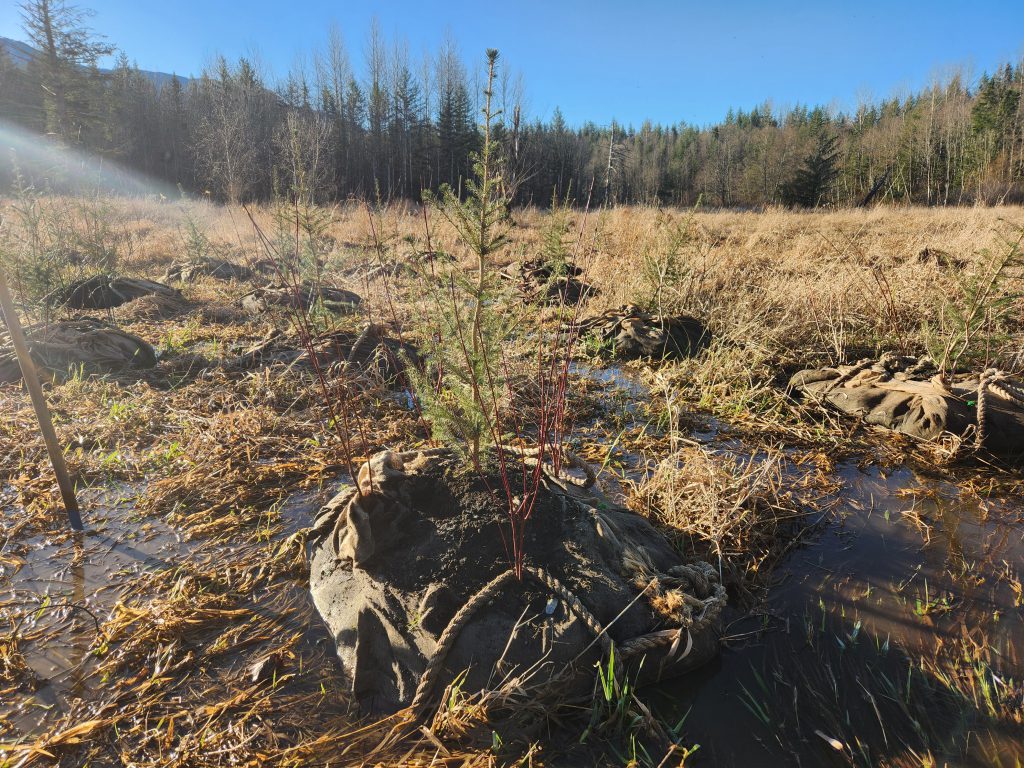
Partners throughout the state have used the Habitat Recovery Pilot Program to simplify the permitting process for their habitat restoration projects.
The program helps applicants spend less time on paperwork. Instead, they can spend more time on research, designing projects, and putting restoration plans into action.
The Habitat Recovery Pilot Program saves time for the people who are restoring our environment. More importantly, it also gives more time to the species who need it—salmon, orcas, and other wildlife.
The Habitat Recovery Pilot Program has increased the efficiency of habitat restoration project investments. Absent legislation action, the program will expire in June 2025.
Washington state should extend and improve the program.
The Habitat Recovery Pilot Program saves time and money
- Applicants report saving THREE MONTHS to a YEAR in administrative permitting delays by working with the program.
- Applicants report saving $1,000-$80,000 in staff time and fees by working with the program.
The program has helped partners complete projects (as of July 2024)
- Partners applied for permits for 38 projects
- 26 projects have been issued permits by the program
- 14 projects have completed construction
The projects included below show how the program has helped partners:
- overcome obstacles;
- restore habitat quickly; and
- make efficient use of funding.
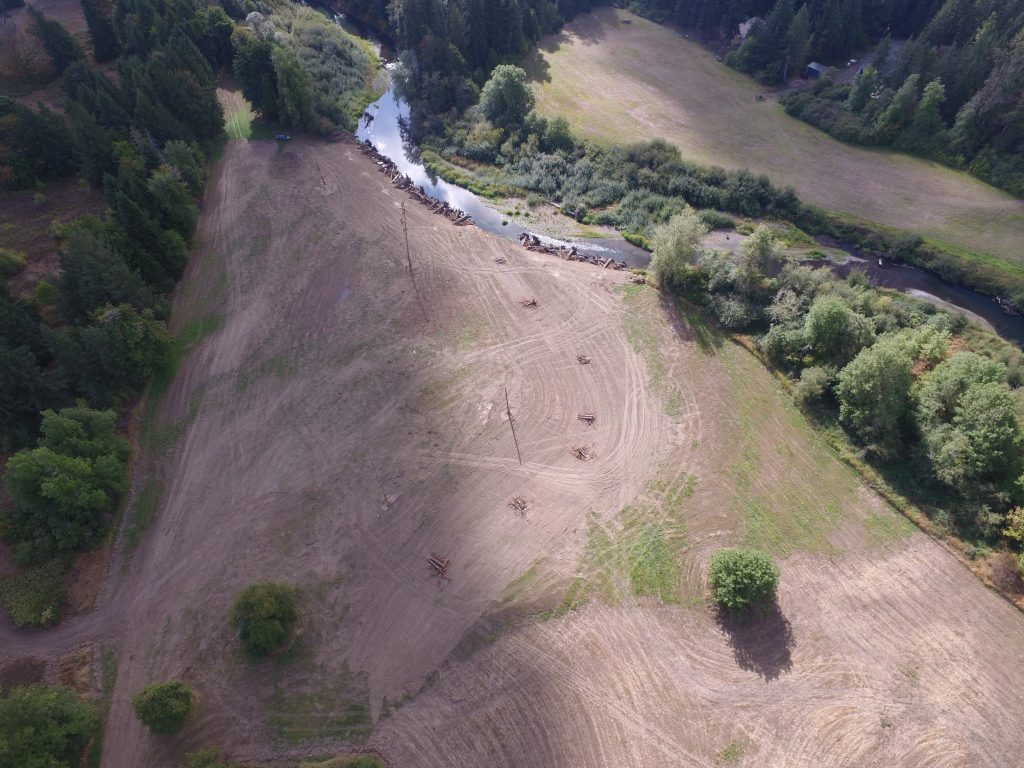
Deschutes River Mile 21 Restoration Project
South Puget Sound Salmon Enhancement Group partnered with the Center for Natural Lands Management to convert former dairy farmland back to floodplain. The partners created a new high-water channel to reconnect the floodplain and remove fine sediment from the river. This helps to slow the water and improve water quality.
The partners planted native trees and shrubs along the river. They also added in-stream log jams to create better salmon habitat. This improved habitat will benefit Chinook, coho, and chum salmon, steelhead, and coastal cutthroat trout.
Cole Baldino is the salmon habitat manager for the South Puget Sound Salmon Enhancement Group. He said the project seemed like a natural fit for the Habitat Recovery Pilot Program, especially because of the floodplain excavation.
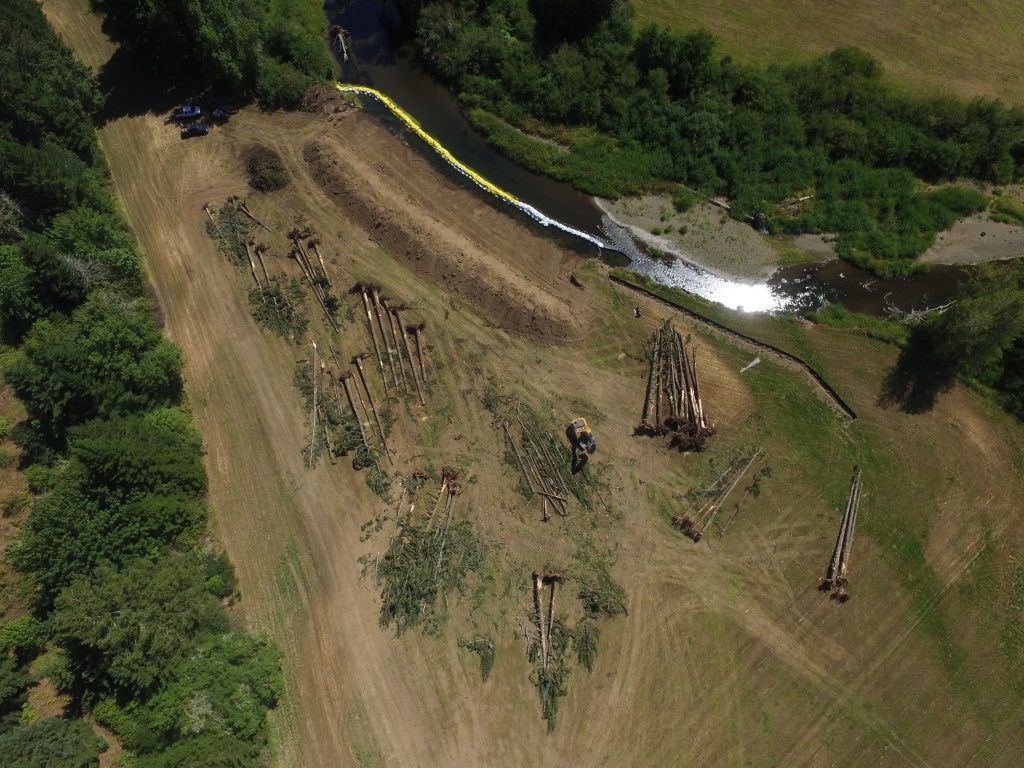
Speaking about the process, Baldino said, “It was streamlined, straightforward, and, as someone who submits permits a couple times a year, quite easy. The review time was fantastic.
“It not only makes our job easier and more effective, but it’s a better use of taxpayer dollars,” he said. “We’re able to do this process a lot more efficiently, and ultimately it allows us to get restoration projects on the ground quicker. And when we don’t have the time, honestly, to really delay these projects out a couple of years due to review. The salmon aren’t going to be waiting for us to review these permits.”
Tulalip Tribes Pre-Planted Pallet Project
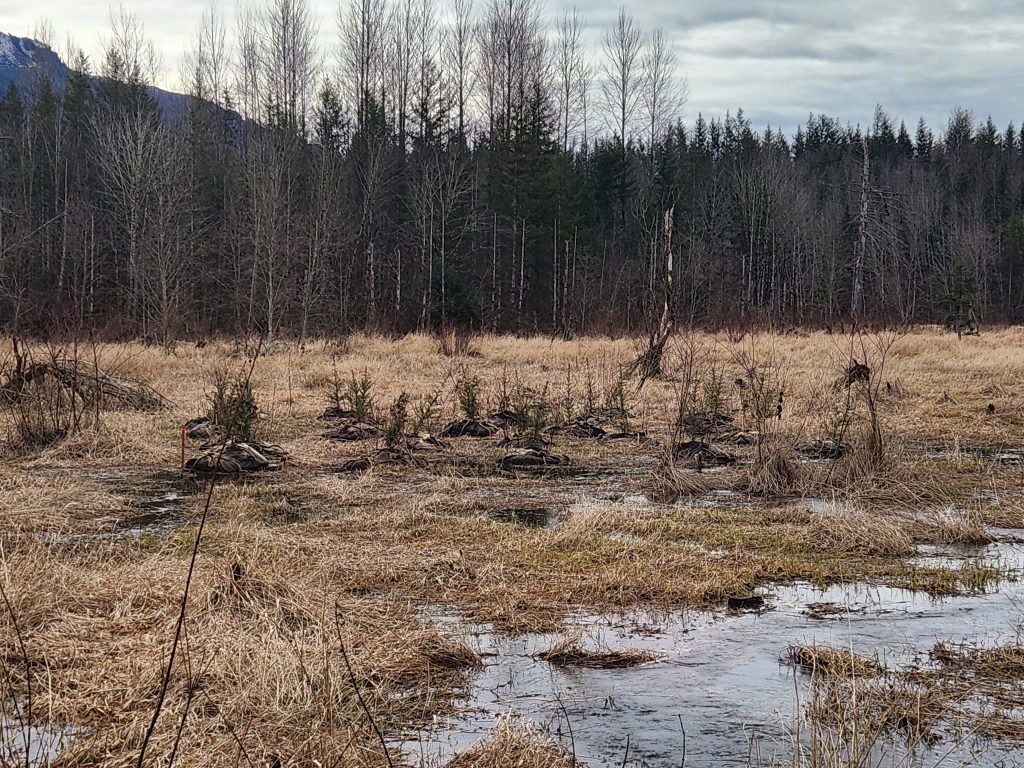
In October 2023, the Tulalip Tribes started an experimental restoration project to improve habitat near Bear Creek.
The Tribes took 120 wood shipping pallets and added soil, four shrubs, and one coniferous tree to each pallet to create a pre-planted package. The Tribes installed 86 of these pallets by helicopter in wetland areas near Bear Creek, in Startup, WA, where invasive reed canarygrass has damaged habitat.
Michelle Bahnick is the wetland biologist for the Tulalip Tribes. They explained that the aim of the project is for the plants on the pallets to establish themselves and shade out the canarygrass.
Todd Gray is the environmental protection ecologist for the Tulalip Tribes. He said that, as of June 2024, all but two of more than 400 native plants on the pallets were alive and growing well. Gray said they hope the project creates a diverse native plant community that provides habitat and environmental benefits.
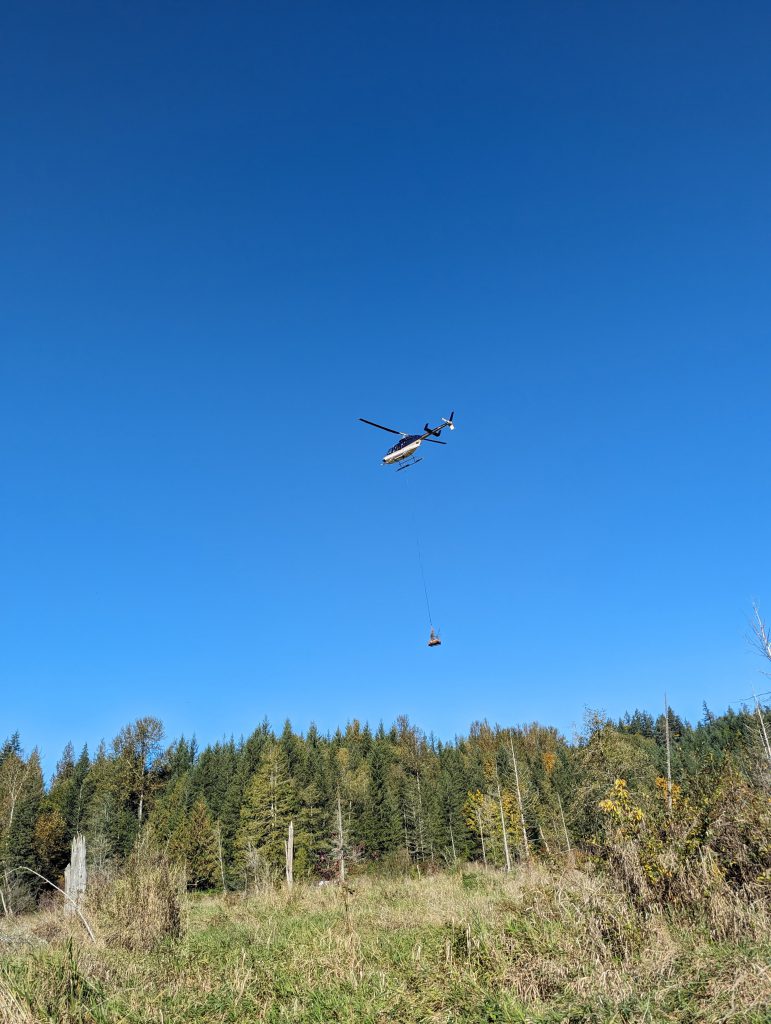
Both Bahnick and Gray gave credit to the Habitat Recovery Pilot Program for helping them move forward with the pallet project.
“The process was not only easy and fast, but it was flexible enough to permit such a unique and novel project,” said Gray. “Science is all about finding stuff out, and often you can’t find stuff out without trying new things. The Habitat Recovery Pilot Program, and other permitting pathways that make it a little quicker and easier and sometimes downright possible to try new things, can be essential to scientific and environmental progress.”
Bahnick added, “Restoration and mitigation are still fairly young fields of study with a lot of the techniques and guidance coming from small-scale studies or anecdotal experience. Having pathways to test new techniques and methodologies is hugely beneficial to the field and the end result of restoring the environment.”
Skokomish River Mile 5 Habitat Restoration Project
During summer 2023, Mason Conservation District restored salmon habitat on a two-mile stretch of the Skokomish River by installing log jams and adding new side channels to the river. This project provides the following benefits to salmon species:
- providing shelter for fish;
- decreasing sediment in the water; and
- making instream habitat more complex.
“The Habitat Recovery Pilot Program is a great example of how lawmakers can come together and find ways of streamlining permits for projects that are critical to recovery.”
Evan Bauder is the executive director of the Mason Conservation District. He said that this project, like many other salmon recovery projects in the region, took a long time to come to fruition due to delays in permitting.
“There are so many different hurdles in the way of us getting big actions implemented that are critical to recovery of our local salmon populations,” Bauder said. “It’s unfortunate that the laws we have in place to protect the environment from development and large-scale commercial industry are the same laws that are getting in the way of us implementing these projects efficiently. So this [the Habitat Recovery Pilot Program] is a great example of how lawmakers can come together and find ways of streamlining permits for projects that are critical to recovery.”
Bauder added that time saved in a permitting process can often mean the difference between a project that moves forward and one that stays on the drawing board.
“The permitting process can actually kill projects,” he said. “River systems are dynamic. They do change. So, when you see years of delays, you’re at risk of your projects no longer being viable because the river changes altogether. It snowballs into lack of progress. And it’s all because of these regulatory hoops that we have to jump through. I think that there’s a lot of room for improvement within the permitting realm, and that’s why there’s a lot of attention on that now.”
South Fork Nooksack Homesteader project
This summer, the Nooksack Indian Tribe has been working on the South Fork Nooksack Homesteader project on the South Fork Nooksack River. This project has built 23 log jams throughout a stretch of the river to create deep pools of cold water. Those deep pools will offer juvenile Chinook salmon refuge from high water temperatures. The project also benefits coho, chum, sockeye, and pink salmon, steelhead, bull trout, and cutthroat trout.
“I appreciate the fact they’re trying to streamline the whole process, and the fact that we don’t have to go through SEPA [State Environmental Policy Act review] and critical areas at the local level and get a shoreline permit. Not having to do those county permits is a huge, huge time saver.”
Lindsie Fratus-Thomas is the watershed restoration coordinator for the Nooksack Indian Tribe. She explained that coordinating the permitting processes—and the capacity it takes to do that—can take time away from work on restoration projects. That’s why she was happy to see the Habitat Recovery Pilot Program make the process quicker.
“I appreciate the fact they’re trying to streamline the whole process, and the fact that we don’t have to go through SEPA [State Environmental Policy Act review] and critical areas at the local level and get a shoreline permit,” Fratus-Thomas said. “Not having to do those county permits is a huge, huge time saver.”
Fratus-Thomas has thought a lot about the state of salmon and ecosystem recovery and offered her honest perspective about what we can do to make more progress. “There’s a lot of funding coming in the pipeline right now with the infrastructure funding. I think in the past some of our largest barriers were funding, and now our largest barrier to implementation is permitting.
“We are losing right now,” she said. “I’ve got our fisheries biologists upstream of me sampling fish that have died before they can spawn because they’re literally dying from the hot river. The river is too hot. We’re trying to build them these log jams that create those nice deep pools with cool water so they can have—I call them rest stops along their salmon highway upstream. And I feel like we are running out of time. Anything we can do to increase efficiencies to implement these projects and spend the funding that we have already allocated should be a major priority in the salmon recovery world.”

